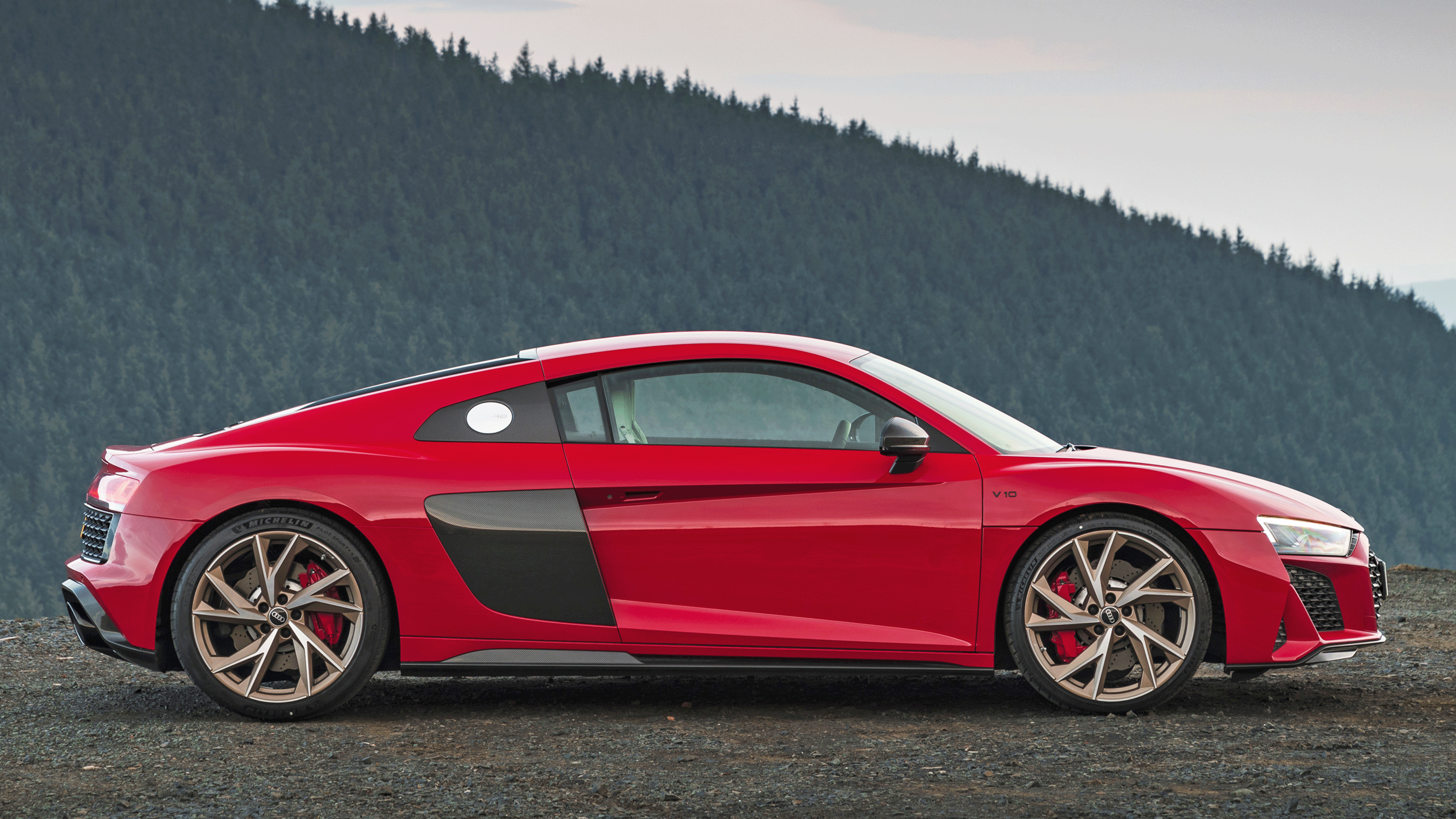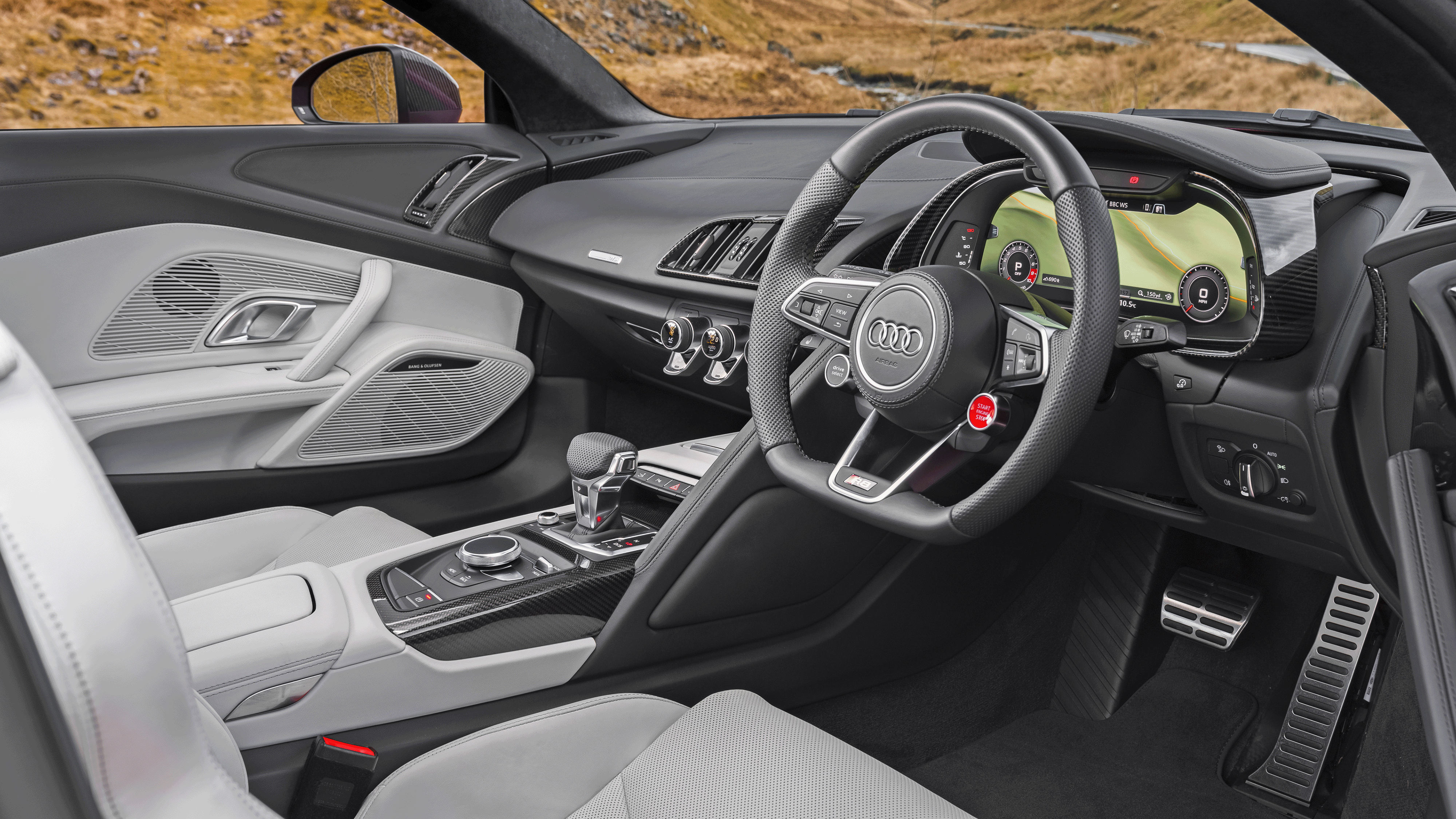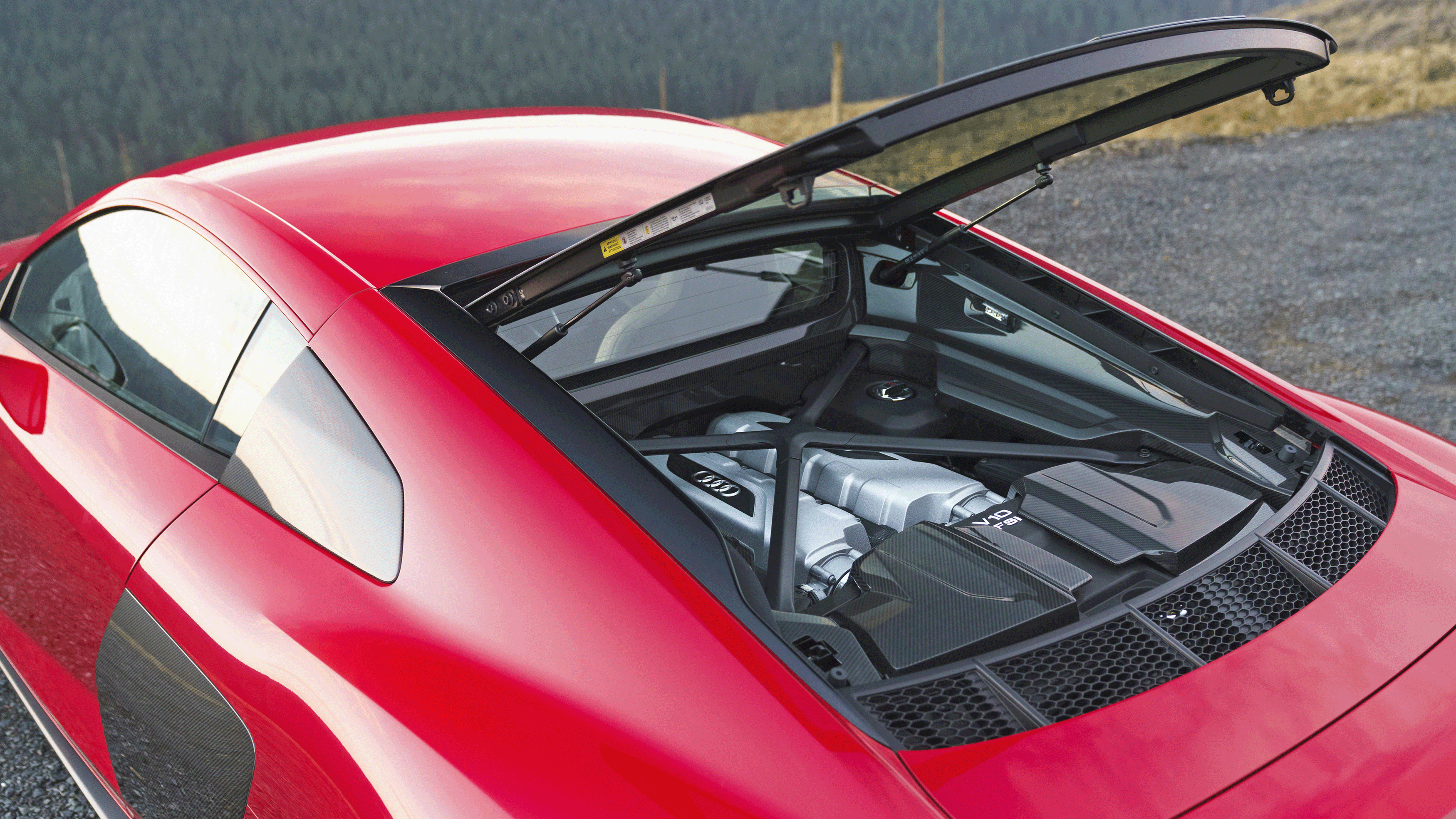Audi R8 Review
The Audi R8 is the sensible everyday supercar - but it's still a mighty performance car
Strengths & weaknesses
- Supercar performance
- Can be used as an everyday car
- Turns heads without being too outlandish
- Little storage space
- Expensive to run
- Steering less precise than rivals
Owners may not want to admit it, but the Audi R8 has always been the sensible supercar choice. It can be driven every day, yet happily keep pace with offerings from Porsche, Ferrari and Lamborghini.
This is partly down to Audi's 'quattro' four-wheel drive, which very effectively manages the car's substantial power and removes some of the scarier moments typically associated with powerful rear-wheel drive supercars, plus the company's inclusion of the latest in-car technology and driver assistance kit. The latest second-generation car, which comes in both Coupe and convertible Spyder versions, is arguably the most technically capable yet.
It's also wider, the styling is sharper and the option of a 4.2-litre V8 engine has been lost in favour of just one motor: a potent 5.2-litre V10. The Coupe version comes in V10 or V10 Plus variants, the latter sporting bespoke exterior styling features and an output of 611hp, putting it on par with the Lamborghini Huracan.
Inside, the car features Audi's high-tech 'virtual cockpit' digital instrument panel, which replaces the traditional dials with a 12.3-inch interactive screen. From here, the driver can adjust everything from multimedia to vehicle settings, while the sat-nav is beamed onto the display with the option to adapt the layout on the move. It is a tech lover's paradise but it will be the driving experience and attention-grabbing exterior styling that will likely draw the most attention.
The 5.2-litre V10 engine is a throwback to the glory days of Formula 1 and boasts a soundtrack that isn't too far off the racing cars of that era, while the seven-gear twin-clutch automatic gearbox, named 'S tronic' - complete with steering-wheel-mounted paddle shifters - is about as close to a racing experience as one can get on the road.
The Spyder is 50% stiffer than the outgoing counterpart, making it the stiffest open-top machine money can buy and significantly improving the way it drives. That translates into greater cornering control, as the reduced flex in the chassis allows the car to remain flat and predictable when roads get challenging, making it almost as capable when driven flat-out as its fixed-roof counterpart.
It's also difficult to find a more exciting sensation than lowering the origami-style electronic roof, which can be achieved in 20 seconds at speeds of up to 31mph, and listening to the bellow of the V10 engine as it reverberates off tunnel walls.
Of course, customers will have to part with vast sums of cash to get in on the action. But with Coupe models now starting at more than £130,000, the Audi R8 looks like a bargain compared to its big brother, the Lamborghini Huracan, which is marginally faster and arguably more tantalising, but it is less technically impressive inside and no way near as comfortable over longer journeys.
Audi R8 Engines
5.2-litre FSI V10
There isn't much in the way of engine choice with the Audi R8 but that isn't a problem, as this motor delivers performance and thrills by the bucket load. It develops a staggering 540hp in the V10 models, which is enough to propel the machine from 0-62mph in 3.5 seconds and on to a top speed of 197mph.
And if that isn't enough, Coupé customers can opt for the V10 Plus model, which uses 610hp to drop the 0-62mph sprint time to 3.2 seconds. Plus, the soundtrack is phenomenal, especially when enjoyed with the roof lowered in the Spyder version, but Audi has also made some attempts to reduce the running costs. Cylinder on demand technology sees an entire bank of cylinders deactivated when the car is up to cruising speed. That means it is technically a five-cylinder machine at certain points in a journey, which uses less fuel and helps improve the overall mpg figure.
To add to this, Audi has also introduced a freewheeling or coasting function, which cuts the revs when the driver releases the accelerator. This works best at motorway speeds and allows the car to coast in certain situations to reduce the load on the engine and improve fuel consumption. Regardless, drivers will struggle to tget close to 20mpg mark in real-world driving conditions.
Audi R8 Trims
There are no trim levels with the Audi R8 per se, but the German marque will allow customers to go absolutely bananas with the options list in pursuit of a highly personalised machine.
For example, the carbon fibre 'Sideblades' can be carefully embossed with the driver's name or company logo at a cost, but more typical optional extras include a powerful Bang & Olufsen sound system, hand-stitched leather seats, bespoke paint options, illuminated interior elements and unique alloy wheel designs.
The R8 V10 Plus model comes with an additional fixed rear spoiler, gloss carbon exterior details, twin-spoke 19-inch wheels and the powerful Audi carbon-ceramic brake set-up, which can also be specified as an optional extra. The drop-top Spyder version also boasts its own unique exterior styling touches, such as smaller carbon Sideblades and hood compartment air outlets, but customers can customise their cars to an impressive level.







.jpg?width=759&height=427&format=webp)